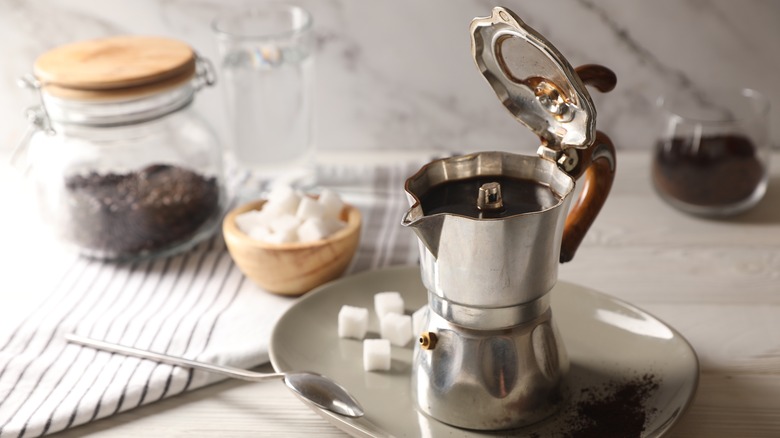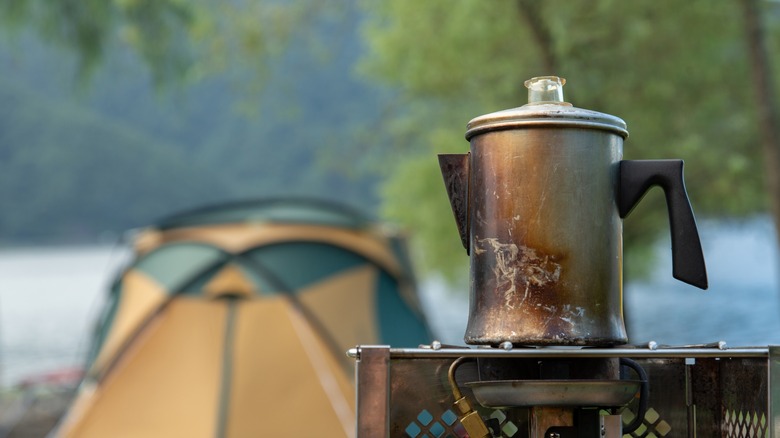What's The Difference Between A Coffee Percolator And A Moka Pot?
We may receive a commission on purchases made from links.
There are as many coffee-making methods as there are coffee types. With all the coffee-brewing gadgets, types, and methods, from fancy espresso machines to the simple pour-over method, figuring out the best way to make your morning joe can get confusing. There are two ways of brewing coffee that are very similar but also have a couple of significant differences.
The two types of coffee makers that are very similar in function are the Moka pot and the percolator. The Moka pot, invented in Italy in 1919 by Alfonso Bialetti, uses pressure to send hot water from the bottom of the pot through a tube and over the ground coffee above. Percolators, patented in the U.S. in 1889 by Hanson Goodrich, work in the same way but with a few important differences.
With a Moka pot, the water passes through the ground coffee once before being collected in the top chamber of the device. These coffee pots are known for delivering a strong cup of coffee similar to espresso. Percolators, on the other hand, allow the coffee to pass through several times, allowing it to be as strong or weak as the drinker likes. Most percolators have a clear glass top where you can keep an eye on how dark your brew is getting and remove it from the heat before it gets too strong for your liking.
The benefits and drawbacks of Moka pots and percolators
While Moka pots come in different sizes, with some as large as a 12-cup capacity. Percolators, on the other hand, can typically hold much more. Remember that coffee urn your grandma used to pull out for large family functions? That 100-cup beast uses the same method of brewing as a stovetop percolator. Even though they're great for big coffee-drinking crowds, they often leave a lot of coffee left over.
Some percolators are electric, but others need to be heated on the stove or over a fire. Moka pots are never electric and are used over a direct heat source. Both are good choices for campers or for when there is a power outage.
One notable difference between percolators and Moka pots is how they're cleaned. Percolators should be cleaned with dish soap and hot water after every use, while Moka pots only need a quick rinse with warm water and thorough drying when you're done using them. If your Moka pot has developed a "patina," it can be washed occasionally with vinegar or baking soda and a stiff brush.

